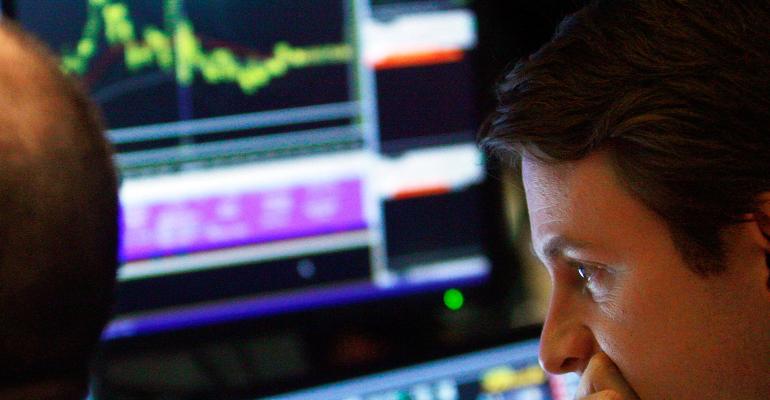By Sarah Ponczek and Carolina Wilson
(Bloomberg) -- To understand market psychology these days, just follow the money.
The $119 billion that’s flowed into exchange-traded funds this year shows investors clinging onto the longest bull market that ever was, even as angst builds that all good things must come to an end. Record appetite for fixed-income funds has coupled with a bid for safety in equities, with investors seeking to sidestep pain from geopolitical risk and slower growth, while pursuing further gains.
“Clients started to be a little more cautious” this year, said Omar Aguilar, the chief investment officer for equities at Charles Schwab Investment Management. “Equities continue to be very attractive relative to other asset classes. However, the key risk in markets is not quite the same as it was in the past.”
With fixed-income payouts at multi-year lows in the midst of a global bond rally, a reach for yield has ensued. Sure, a trade war continues and economic data has softened both stateside and abroad, but the Federal Reserve is on the cusp of cutting interest rates and President Donald Trump is sure to make a deal with China eventually -- or so the argument goes. That should support stocks, even if volatility ramps up along the way.
Enter defensive equity ETF bets, from industry plays to factor picks. Real estate, communications, utilities and consumer staples funds have seen the most appetite in 2019, with every other sector seeing outflows, according to data compiled by Bloomberg. Both energy and materials funds, which are more economically sensitive, experienced their worst-ever half year.
Inflows to smart-beta ETFs -- or those that focus on particular stock characteristics like momentum, growth or value -- have followed a similar pattern. Funds that focus on providing a smooth ride for investors, often called low volatility, have taken in nearly $12 billion, more than double that of any other factor this year and the most for a six-month period since 2016, Bloomberg Intelligence data show.
“Investors are cautious, but they need to get exposure because the market has ramped up so much from the lows that we saw at the end of last year,” said Nick Kalivas, senior equity product strategist for Invesco Ltd.’s ETF business. Low volatility is part of that, he said, because “they’re more comfortable entering the water, tip-toeing in with that, as opposed to taking big risk.”
So far, this approach has paid off. Performance hasn’t been sacrificed for safety, with the two largest ETFs that focus on the strategy -- the $28.6 billion iShares Edge MSCI Min Vol USA ETF and the $11.6 billion Invesco S&P 500 Low Volatility ETF -- beating the S&P 500 Index’s 18% gain.
There’s also been a desire for guaranteed income through dividend payments, particularly with fixed-income yields so low. Dividend factor ETFs, plus utilities and real estate funds that are often used as bond proxies due to their high payouts, have seen the most combined interest since 2015, data compiled by Bloomberg show.
But incessant demand for safe strategies has sent valuations to extremes, leaving investors tornover whether or not to pile into this already-pricey corner of the market. High-dividend paying stocks are currently trading at premiums “usually affiliated with recession,” according to Bloomberg Intelligence strategists Gina Martin Adams and Michael Casper. This time, though, positioning more likely reflects low inflation or rates, rather than worries about slowing growth, they said.
So where next? Keep watching those flows. Passive equity demand was “strongly positive” when the S&P 500 rallied through April, but then quickly reversed for May’s trade-induced stumble, according to Lori Calvasina, head of U.S. equity strategy at RBC Capital Markets. Buyers returned to fuel June’s rebound.
Index huggers have been instrumental in delivering the best first half for U.S. stocks in more than two decades, she wrote to clients last week. “Passive funds have been the driver of inflows,” she said. Flows “tell the story of the market so clearly.”
--With assistance from Sid Verma.
To contact the reporters on this story:
Sarah Ponczek in New York at [email protected];
Carolina Wilson in New York City at [email protected]
To contact the editors responsible for this story:
Jeremy Herron at [email protected]
Rachel Evans, Brendan Walsh





